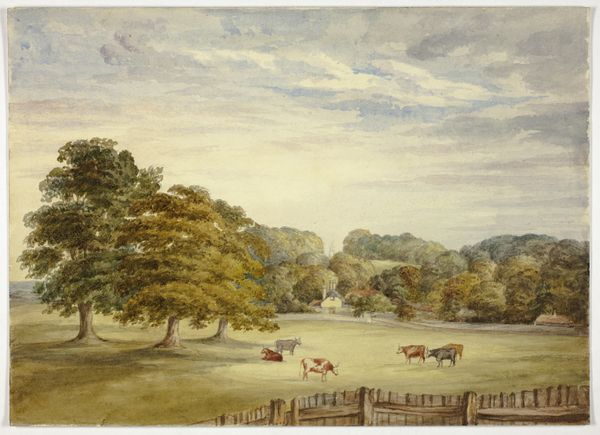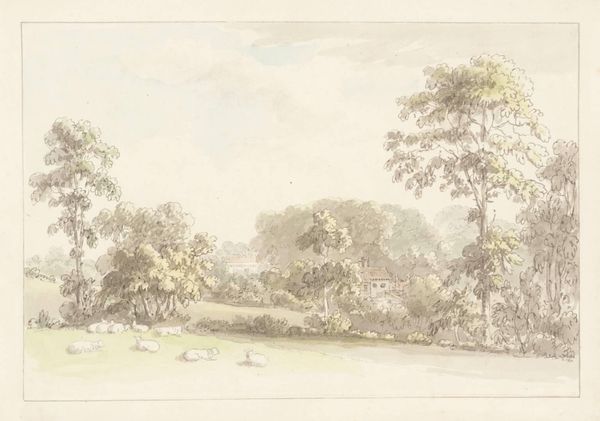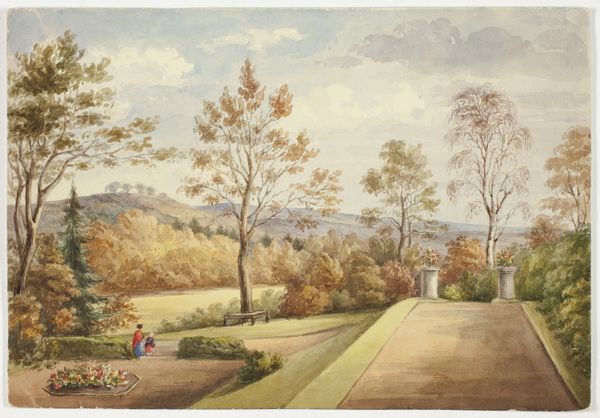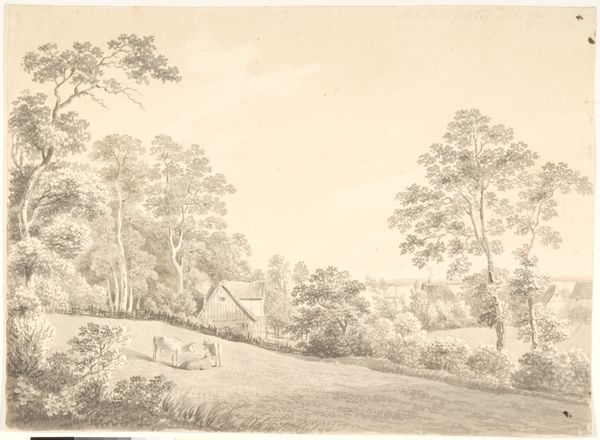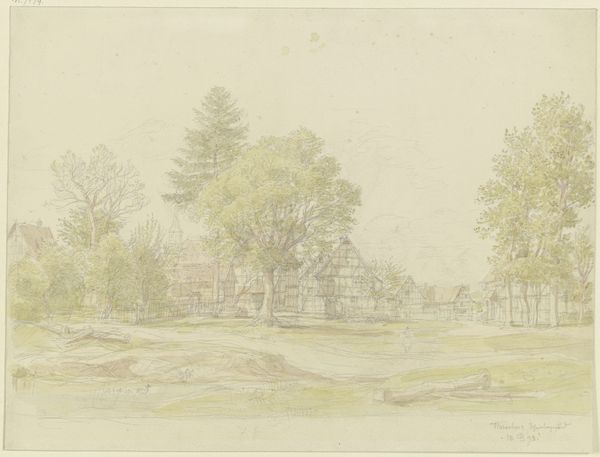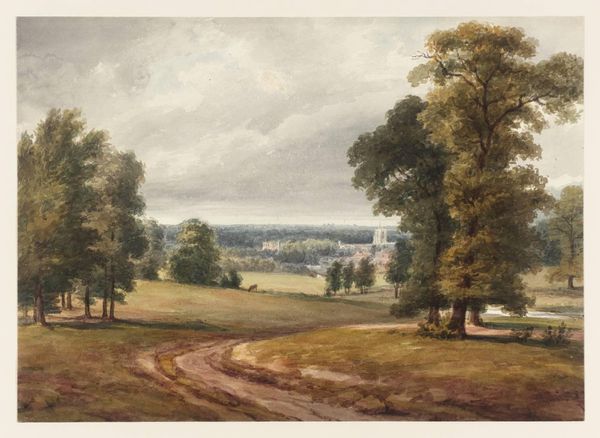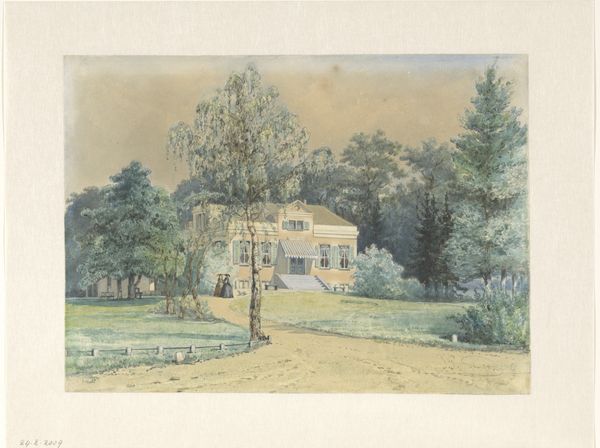
Die Schweizerhäuser im Schloßpark Wilhelmsthal bei Eisenach c. 1800 - 1806
0:00
0:00
drawing, painting, plein-air, watercolor, architecture
#
drawing
#
neoclacissism
#
painting
#
plein-air
#
landscape
#
watercolor
#
romanticism
#
watercolor
#
architecture
Copyright: Public Domain
Editor: So, this is "Die Schweizerhäuser im Schloßpark Wilhelmsthal bei Eisenach" by Georg Melchior Kraus, dating from around 1800 to 1806. It's a watercolor, giving it a light and airy feeling. What stands out to you most about it? Curator: The romantic longing for an idealized past is so present here. Note how the Swiss houses, though physically present, also act as symbols. These buildings evoke ideas of rustic virtue and simplicity, ideals very potent in a rapidly changing Europe. Editor: Rustic virtue? Can you expand on that? Curator: Absolutely. Consider the political landscape. This work was made in a time of immense upheaval and war. Symbols of simple, rural life offered an escape, an antidote to anxieties around industrialization and revolution. What kind of emotions does it stir in you? Editor: A sort of peaceful yearning, definitely. I also see how the artist is careful to compose the nature with geometrical and symmetrical arrangement of building constructions. How does it fit into art history movements? Curator: You got a good sense of its place between Romanticism and Neoclassicism: while it is depicting a landscape and its architecture (romantic features), its pictorial vocabulary, color palette, use of perspective, drawing qualities also speak of neo-classical approaches to painting, when precision and idealized forms take center stage. It's like a dream of stability imposed on a landscape soon to be swallowed up by historical events. What does this contrast tell us about cultural memory? Editor: It highlights the selective nature of memory. We often cling to idealized symbols during times of stress to comfort our imagination, neglecting some details and giving prominence to others. I'll certainly look at landscapes differently now. Curator: Indeed. Landscapes aren’t just pretty scenes, they carry the weight of our shared cultural past and future aspirations.
Comments
No comments
Be the first to comment and join the conversation on the ultimate creative platform.

